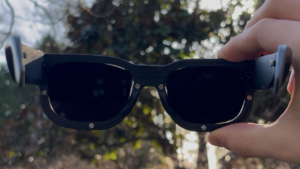First Published in
On 25 June 1994, two months after South Africa’s first democratic election and four months after logging what remains his second best time in 15 completed Cape Argus bike races, the novelist JM Coetzee and seven friends set off on a cycling tour of France. A week into his trip, having already ruminated on why the French approve of cycling and rural Afrikaners stigmatised the bike for generations in this country, the future Nobel laureate wrote: “The bicycle is… The one indubitably triumphant contribution of Western technology to the world. Unlike almost every other Western invention, it has no negative side. It has brought only good with it.”
Later published in Leadership magazine, the first time I read Coetzee’s diary, in particular his thoughts on the bicycle, I thought him, well, barmy. If not mad, then certainly hyperbolic, which is a bit like saying that Mies van der Rohe’s designs are Rococo. It just doesn’t compute. Turns out, in my ignorance, I was the dunce.
In his new book, It’s All About the Bike, an engaging account of one man’s tireless quest to build an absolutely bespoke and just-right bicycle working with only the best manufacturers, the English journalist and cycling enthusiast Robert Penn writes: “The bicycle is one of mankind’s greatest inventions – it’s up there with the printing press, the electric motor, the telephone, penicillin and the World Wide Web.”
Coetzee, whose reputation as a man of letters is founded on the laconic restraint of his writing, was already arguing around this point 16 years ago, offering that the bike “has multiplied the weight we can carry and the distance we can travel, and has done so without any noticeable harm to the environment”. While the ecological impact of the bike is a moot point, physiologically and psychologically, the bicycle is beyond contempt. “It has,” as Coetzee pointed out, “extended the horizons, physical and mental, of billions of people, not least among them children.”
Underlying both Penn and Coetzee’s rapturous enthusiasm – some might think it evangelism – is a deep-seated love for the bike. It was, until the arrival of the car, a love shared by many across the globe, and still is judging by trend reports from Europe and North America. Also the photographic evidence of Cape Town cycling enthusiast, Stan Engelbrecht, who is currently documenting ordinary South Africans and their metal steads. (Log onto Facebook, type in “Bicycle Portraits”.) Love is definitely the feeling.
“I don’t know why people fall in love with cycling,” states custom bike entrepreneur Paul Levine, his athletic physique tucked into a brown button shirt and black shorts. Like Coetzee and Penn, he thinks it has something to do with our first childhood experiences on a two-wheeler.
“I fell in love with it as a kid,” says Levine. “I think that is how people get their first sense of freedom. Think of it, when you are four, five, six years old, your first taste of independence is when you are able to ride away from your house. Then you do whatever you want. To come back 30 or 40 years later and get that same sense of freedom in such a simple machine – you can see why people fall in love with it.”
I am seated in Levine’s appointment-only cycling store at 80 West End Avenue in New York. Opened in 2006, Signature Cycles is the world’s largest high-end custom bike shop. I have come here to find out some of the reasons for the massive global resurgence in cycling, especially in made-to-order bikes.
The signs of cycling’s resurgence are apparent far and wide. In a single week in May, three specialist cycling cafes opened in London, marking a growing trend towards niche lounges offering workshop facilities and casual dining. In Berlin this summer, clothing retailers included eye-catching single-speed and retro-styled bikes (such as the Pashley Guv’nor) in their window displays. In 2008, the US bike company Cannondale collaborated with Dutch denim brand G-Star to produce a jaw dropping limited-edition commuter bike. Fashion designer Paul Smith has also gotten in on the act, as have urban hipsters riding stripped-down fixed-gear bikes. Old British marques from the first golden age of cycling – the late 1800s – are enjoying a revival, among them the leather saddle maker Brooks. In New York, it is not uncommon for a customer walking into Levine’s store to drop $8 500 on a new, made-to-measure racer. “It is not atypical to have $15 000 to $20 000 bike sales.”
On average, aged between 35 and 60, with four out of every 10 visitors likely to be a woman, Levine describes archetypal visitors to his first floor showroom as “recreational cyclists that are real hobbyists”. For the most part, they arrive in search of a bespoke road or triathlon bike – and as such form part of a burgeoning global trend that has been defined by market intelligence company Mintel as “the ‘noughties’ version of the midlife crisis”.
Word of mouth, rather than a flashy website, is what draws customers to Signature Cycles in particular. Unlike many independent bike designers working outside the big corporate culture that dominates world cycling, its manufacturing epicentre based in Taiwan, Levine does not actually build anything for his customers.
“My background is retail consulting,” he explains. A keen cyclist, when not working on in-store graphics and architecture, he would chat with doctors, coaches and therapists about the perfect bike fit. This led him to develop a protocol for measuring and personalising bike fit, which he went on to teach at pioneering custom bike builder Serotta. After heading up the company’s fitment laboratory for five years, Levine decided to go it alone.
Working initially without office, then from a rented space in a gym, Levine now employs 10 staff at two sites, including two full-time technicians who do the two-hour performance and physiological tests underpinning every custom frame build.
A walk around Levine’s substantial showroom, which includes demo models from the handful of independent bike makers he works with, reveals three distinct philosophical biases. Concisely, they relate to geography, materiality and design. Levine works chiefly with East Coast frame builders, including his former employer, Serotta; the triathlon brand Guru; as well as manufacturers Seven, Parlee and Independent Fabrication.
“It is nice to be able to drive to the manufacturer,” says Levine, “meet the owner, watch the bikes being built, and help my clients – if they are interested – go to the manufacturing plant.”
His choice of construction material is as defined as his choice of builder. Where West Coast bike builders like Portland’s Renovo Bicycles are experimenting with the use of wooden frames – made from ash, fir, bobinga and bamboo – Levine only uses combinations of steel, carbon-fibre and titanium. Significantly, all his bikes have a traditional diamond-shaped frame. If you’re after something that looks like Ben Wilson’s frameless monowheel, a unique concept bike where the rider is seated inside a large wheel without spokes, commissioned for the XXIst Century Man exhibition at 21_21 Design Sight in Tokyo, best you avoid a trip to Signature Cycles. The company specialises in functional, useable rides that will convey their owners for tens of thousands of kilometres – not “art”.
The distinction is important to note. Many design blogs routinely carry stories of bike designs espousing novel approaches to frame design. These are concept pieces, eye candy. Nothing more.
“There have been hundreds, perhaps thousands of attempts to better the diamond frame design in the century and quarter since it ‘set the fashion to the world’,” writes Penn. “None could be said to have got close. There have been innumerable refinements in the materials used to make frames, and the constructional aspects of bicycle tubing – non-round shapes, varying wall thicknesses and tapered diameters – have become highly sophisticated. But the basic diamond shape, made up of two triangles, remains unchanged.”
So certain is Penn of the diamond shape – which Coetzee himself described as “set forever” – that when it came to deciding on his perfect bike frame, he opted for a handmade steel frame with a “diamond soul” made by the Stoke-on-Trent bike builder, Brian Rourke.
Why all this devotion to a thing that isn’t very good in the rain? And why, for that matter, pay a premium for it? After all, as Levine concedes, there are “more brands and more models and more manufacturers than ever before”. Surely the big guys must be doing something right. Or else they wouldn’t be big, right?
For Penn, the answer lies in the mind of the enthusiast. High-end design consumers want integrity and sustainability from their products, not novelty and obsolescence. “I need a talismanic machine that somehow reflects my cycling history and carries my cycling aspirations,” declares Penn. “I want craftsmanship, not technology; I want the bike to be manmade; I want a bike that has character, a bike that will never be last year’s model.” The reason, in other words, has to do with an artisanal yearning that is pretty much absent from most industrially produced consumer objects.
“You need to be comfortable on your bike,” says Levine, perhaps simplifying the issue to its barest essence.
So, I propose to Levine, it is the difference between buying an off-the-shelf suit and having a bespoke suit tailored to your personal requirements.
“It is 100% the same,” he says, his smile suggesting that the knucklehead in front of him has finally got the message. “I relate that to a lot of my clients who get bespoke clothing: There is a difference – there is no compromise. You could settle for something you like in a stock product, or you can tell us what you want and we can create it for you.” A one-of-a-kind, personally hand-fitted, break the bank bicycle that will love you as much as you love it.
Sean O’Toole is a Cape Town writer and journalist. He owns six bicycles, scattered across three cities, and once cycled 1 800km across rural Japan.
On 25 June 1994, two months after South Africa’s first democratic election and four months after logging what remains his second best time in 15 completed Cape Argus bike races, the novelist JM Coetzee and seven friends set off on a cycling tour of France. A week into his trip, having already ruminated on why the French approve of cycling and rural Afrikaners stigmatised the bike for generations in this country, the future Nobel laureate wrote: “The bicycle is… The one indubitably triumphant contribution of Western technology to the world. Unlike almost every other Western invention, it has no negative side. It has brought only good with it.”
Later published in Leadership magazine, the first time I read Coetzee’s diary, in particular his thoughts on the bicycle, I thought him, well, barmy. If not mad, then certainly hyperbolic, which is a bit like saying that Mies van der Rohe’s designs are Rococo. It just doesn’t compute. Turns out, in my ignorance, I was the dunce.
In his new book, It’s All About the Bike, an engaging account of one man’s tireless quest to build an absolutely bespoke and just-right bicycle working with only the best manufacturers, the English journalist and cycling enthusiast Robert Penn writes: “The bicycle is one of mankind’s greatest inventions – it’s up there with the printing press, the electric motor, the telephone, penicillin and the World Wide Web.”
Coetzee, whose reputation as a man of letters is founded on the laconic restraint of his writing, was already arguing around this point 16 years ago, offering that the bike “has multiplied the weight we can carry and the distance we can travel, and has done so without any noticeable harm to the environment”. While the ecological impact of the bike is a moot point, physiologically and psychologically, the bicycle is beyond contempt. “It has,” as Coetzee pointed out, “extended the horizons, physical and mental, of billions of people, not least among them children.”
Underlying both Penn and Coetzee’s rapturous enthusiasm – some might think it evangelism – is a deep-seated love for the bike. It was, until the arrival of the car, a love shared by many across the globe, and still is judging by trend reports from Europe and North America. Also the photographic evidence of Cape Town cycling enthusiast, Stan Engelbrecht, who is currently documenting ordinary South Africans and their metal steads. (Log onto Facebook, type in “Bicycle Portraits”.) Love is definitely the feeling.
“I don’t know why people fall in love with cycling,” states custom bike entrepreneur Paul Levine, his athletic physique tucked into a brown button shirt and black shorts. Like Coetzee and Penn, he thinks it has something to do with our first childhood experiences on a two-wheeler.
“I fell in love with it as a kid,” says Levine. “I think that is how people get their first sense of freedom. Think of it, when you are four, five, six years old, your first taste of independence is when you are able to ride away from your house. Then you do whatever you want. To come back 30 or 40 years later and get that same sense of freedom in such a simple machine – you can see why people fall in love with it.”
I am seated in Levine’s appointment-only cycling store at 80 West End Avenue in New York. Opened in 2006, Signature Cycles is the world’s largest high-end custom bike shop. I have come here to find out some of the reasons for the massive global resurgence in cycling, especially in made-to-order bikes.
The signs of cycling’s resurgence are apparent far and wide. In a single week in May, three specialist cycling cafes opened in London, marking a growing trend towards niche lounges offering workshop facilities and casual dining. In Berlin this summer, clothing retailers included eye-catching single-speed and retro-styled bikes (such as the Pashley Guv’nor) in their window displays. In 2008, the US bike company Cannondale collaborated with Dutch denim brand G-Star to produce a jaw dropping limited-edition commuter bike. Fashion designer Paul Smith has also gotten in on the act, as have urban hipsters riding stripped-down fixed-gear bikes. Old British marques from the first golden age of cycling – the late 1800s – are enjoying a revival, among them the leather saddle maker Brooks. In New York, it is not uncommon for a customer walking into Levine’s store to drop $8 500 on a new, made-to-measure racer. “It is not atypical to have $15 000 to $20 000 bike sales.”
On average, aged between 35 and 60, with four out of every 10 visitors likely to be a woman, Levine describes archetypal visitors to his first floor showroom as “recreational cyclists that are real hobbyists”. For the most part, they arrive in search of a bespoke road or triathlon bike – and as such form part of a burgeoning global trend that has been defined by market intelligence company Mintel as “the ‘noughties’ version of the midlife crisis”.
Word of mouth, rather than a flashy website, is what draws customers to Signature Cycles in particular. Unlike many independent bike designers working outside the big corporate culture that dominates world cycling, its manufacturing epicentre based in Taiwan, Levine does not actually build anything for his customers.
“My background is retail consulting,” he explains. A keen cyclist, when not working on in-store graphics and architecture, he would chat with doctors, coaches and therapists about the perfect bike fit. This led him to develop a protocol for measuring and personalising bike fit, which he went on to teach at pioneering custom bike builder Serotta. After heading up the company’s fitment laboratory for five years, Levine decided to go it alone.
Working initially without office, then from a rented space in a gym, Levine now employs 10 staff at two sites, including two full-time technicians who do the two-hour performance and physiological tests underpinning every custom frame build.
A walk around Levine’s substantial showroom, which includes demo models from the handful of independent bike makers he works with, reveals three distinct philosophical biases. Concisely, they relate to geography, materiality and design. Levine works chiefly with East Coast frame builders, including his former employer, Serotta; the triathlon brand Guru; as well as manufacturers Seven, Parlee and Independent Fabrication.
“It is nice to be able to drive to the manufacturer,” says Levine, “meet the owner, watch the bikes being built, and help my clients – if they are interested – go to the manufacturing plant.”
His choice of construction material is as defined as his choice of builder. Where West Coast bike builders like Portland’s Renovo Bicycles are experimenting with the use of wooden frames – made from ash, fir, bobinga and bamboo – Levine only uses combinations of steel, carbon-fibre and titanium. Significantly, all his bikes have a traditional diamond-shaped frame. If you’re after something that looks like Ben Wilson’s frameless monowheel, a unique concept bike where the rider is seated inside a large wheel without spokes, commissioned for the XXIst Century Man exhibition at 21_21 Design Sight in Tokyo, best you avoid a trip to Signature Cycles. The company specialises in functional, useable rides that will convey their owners for tens of thousands of kilometres – not “art”.
The distinction is important to note. Many design blogs routinely carry stories of bike designs espousing novel approaches to frame design. These are concept pieces, eye candy. Nothing more.
“There have been hundreds, perhaps thousands of attempts to better the diamond frame design in the century and quarter since it ‘set the fashion to the world’,” writes Penn. “None could be said to have got close. There have been innumerable refinements in the materials used to make frames, and the constructional aspects of bicycle tubing – non-round shapes, varying wall thicknesses and tapered diameters – have become highly sophisticated. But the basic diamond shape, made up of two triangles, remains unchanged.”
So certain is Penn of the diamond shape – which Coetzee himself described as “set forever” – that when it came to deciding on his perfect bike frame, he opted for a handmade steel frame with a “diamond soul” made by the Stoke-on-Trent bike builder, Brian Rourke.
Why all this devotion to a thing that isn’t very good in the rain? And why, for that matter, pay a premium for it? After all, as Levine concedes, there are “more brands and more models and more manufacturers than ever before”. Surely the big guys must be doing something right. Or else they wouldn’t be big, right?
For Penn, the answer lies in the mind of the enthusiast. High-end design consumers want integrity and sustainability from their products, not novelty and obsolescence. “I need a talismanic machine that somehow reflects my cycling history and carries my cycling aspirations,” declares Penn. “I want craftsmanship, not technology; I want the bike to be manmade; I want a bike that has character, a bike that will never be last year’s model.” The reason, in other words, has to do with an artisanal yearning that is pretty much absent from most industrially produced consumer objects.
“You need to be comfortable on your bike,” says Levine, perhaps simplifying the issue to its barest essence.
So, I propose to Levine, it is the difference between buying an off-the-shelf suit and having a bespoke suit tailored to your personal requirements.
“It is 100% the same,” he says, his smile suggesting that the knucklehead in front of him has finally got the message. “I relate that to a lot of my clients who get bespoke clothing: There is a difference – there is no compromise. You could settle for something you like in a stock product, or you can tell us what you want and we can create it for you.” A one-of-a-kind, personally hand-fitted, break the bank bicycle that will love you as much as you love it.
Sean O’Toole is a Cape Town writer and journalist. He owns six bicycles, scattered across three cities, and once cycled 1 800km across rural Japan.






























